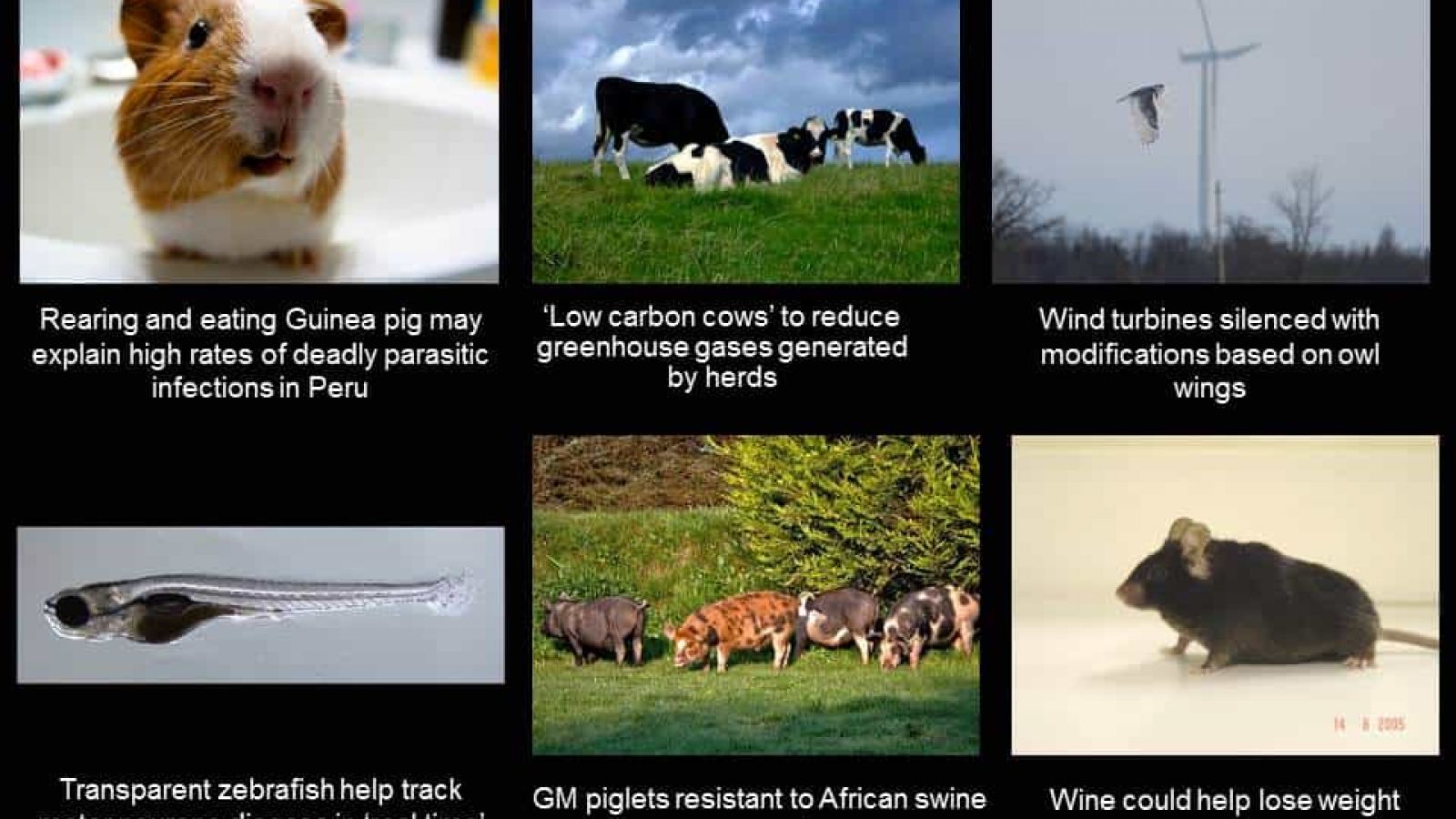22/06/15
Rearing and eating Guinea pig may explain the high rates of deadly parasitic infections in parts of Peru, according to new research. Guinea pigs can act as a reservoir for a single-celled parasite called Trypanosoma cruzi, which causes an often fatal disease in humans called Chagas. While it is very difficult for most humans to catch Chagas disease, rates of infection in some Andean populations can be as high as 40%, caused by the consumption of infected Guinea pigs.
Scientsts examined the insects that spread T. cruzi, and found that more than 80% of the insects taken from two guinea pig pens there were infected, whereas only about 6% of insects sampled away from the rodent enclosures were. Unfortunately, the bugs that live close to guinea pigs also live close to people, increasing the chance that T. cruzi will find its way into human hosts and keep the Chagas rate high.
http://news.sciencemag.org/…/guinea-pig-feasts-may-explain…/
23/06/15
Transparent zebra fish allow researchers to track motor neurone disease in 'real time' as the disease develops. Dr Nicholas Cole, from the Macquarie University's Motor Neuron Disease Research Centre in Australia, inject zebra fish embryos with human genes that cause MND, along with several fluorescent jellyfish proteins that cause a yellow glow in dying neurons affected by the disease.
"A fish goes from one cell to the whole animal within two days," Dr Cole says, "and we can watch individual nerves as they anchor into muscle fibres. We can see the nerves grow."
http://www.smh.com.au/…/transparent-fish-give-hope-for-moto…
25/06/15
Genetically modified piglets resistant to African swine fever could be the first commercially viable GM in the UK. The piglets are indistinguishable from other Large White variety pigs – except one letter of their genetic code has been flipped to make their immune system slightly closer to a warthog’s. The insertion of a warthog’s gene protects the pigs against the tick-borne disease, which is currently sweeping through Eastern Europe and could affect British farms in the future. The breakthrough is the development of new “ultra-precise” gene editing tools that introduce changes in a way that is indistinguishable from naturally occurring mutations. The new techniques also overcome three major objections to GM in the past: the use of viruses to “carry” genetic changes into the pigs’ cells, the need to use antibiotic resistance genes in the modification process, which has been seen as an environmental threat; and the need for cloning.
Study in mice shows wine could help you lose weight. Resveratrol, found in grapes, berries and red wine could help turn your excess white fat into active ‘brown’ fat which reduces weight gain by burning up calories. Other polyphenol chemicals in fruit may have the same effect. Scientists gave mice amounts of resveratrol equivalent to humans consuming 12 ounces of fruit per day. They found that despite a high fat diet, the mice gained 40% less weight than animals not fed the compound.
26/05/15
Wind turbines blades modified with a surface design based on owl wings could both silence turbines and make them more efficient. Researchers looked at two features that make owl wings silent. Evenly spaced bristles along the width of the wings break up sound waves as an owl flies, preventing them from building up and producing noise. At the same time, a canopy of downy feathers reduces air pressure on the wings' surface, providing a dampening effect. Artificial fins for wind turbines that replicate the owl's evenly spaced bristles, also disrupt surface pressure on the aerofoil, reducing thus the sound waves they produce.
Scientists are creating ‘low carbon cows’ to try and reduce greenhouse gases generated by herds. Cows produce a lot of methane and carbon dioxide because of the way they process food. About 1/10 of the 570million tonnes of carbon dioxide produced by Britain every year comes from farming, with 28m tonnes attributable to cattle and livestock. Scientists have created three herds of 'eco cows' as part of an experiment to reduce the amount of greenhouses gases generated by the production of beef. They will be closely monitoring every aspect of the cows’ environment - particularly what they eat - to try and reduce the amount of harmful gases they produce by up to 50 per cent. They hope to show beef can be produced with less damage to the environment and a carbon footprint smaller than growing cucumber.
Last edited: 25 October 2022 11:27



